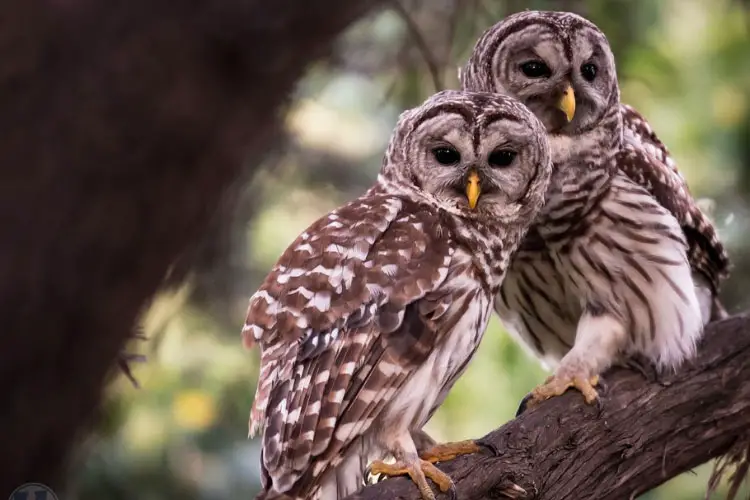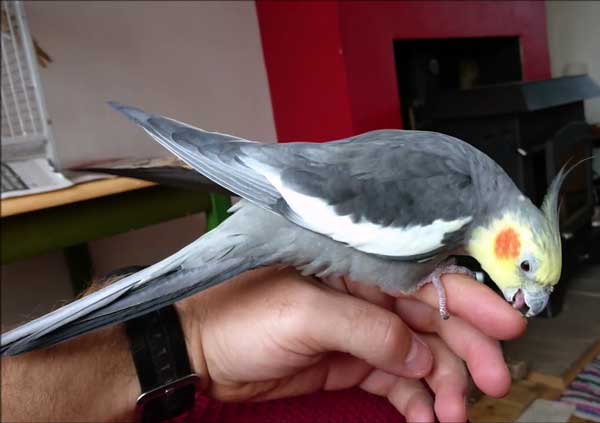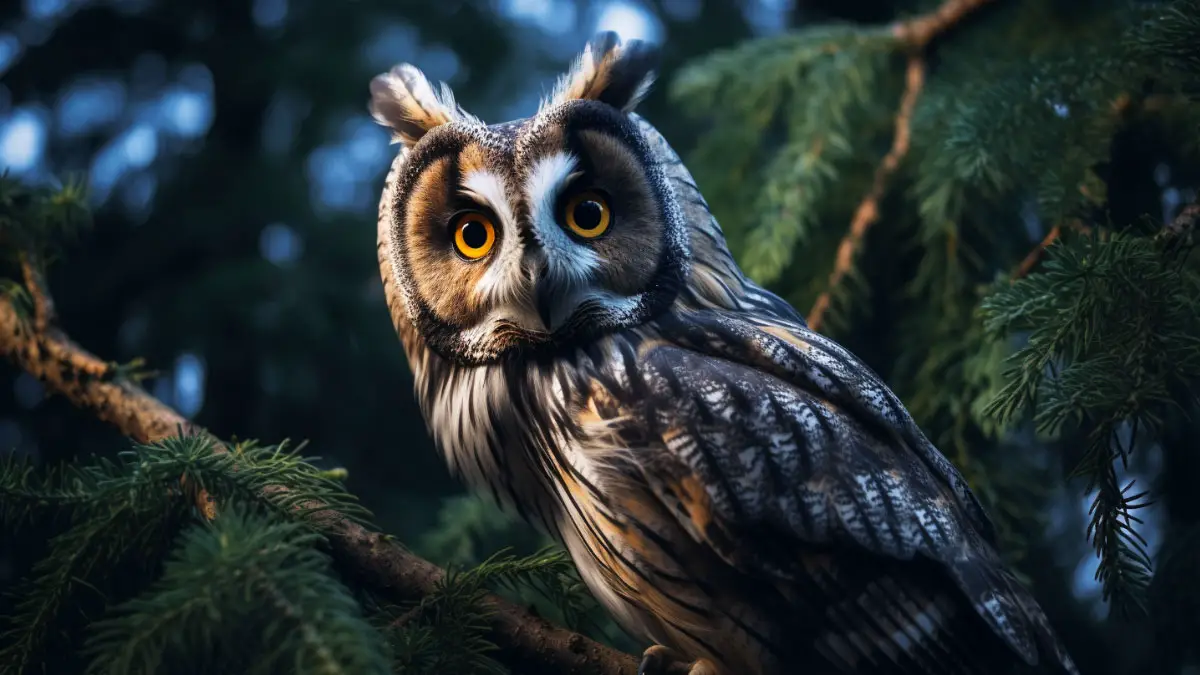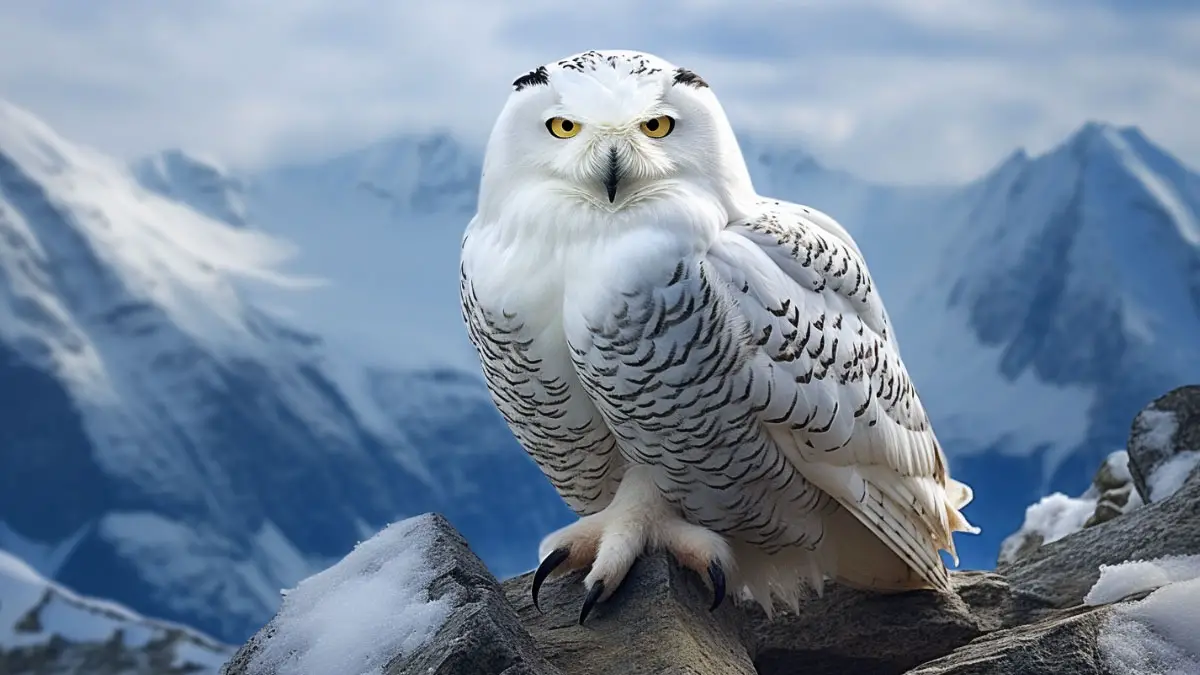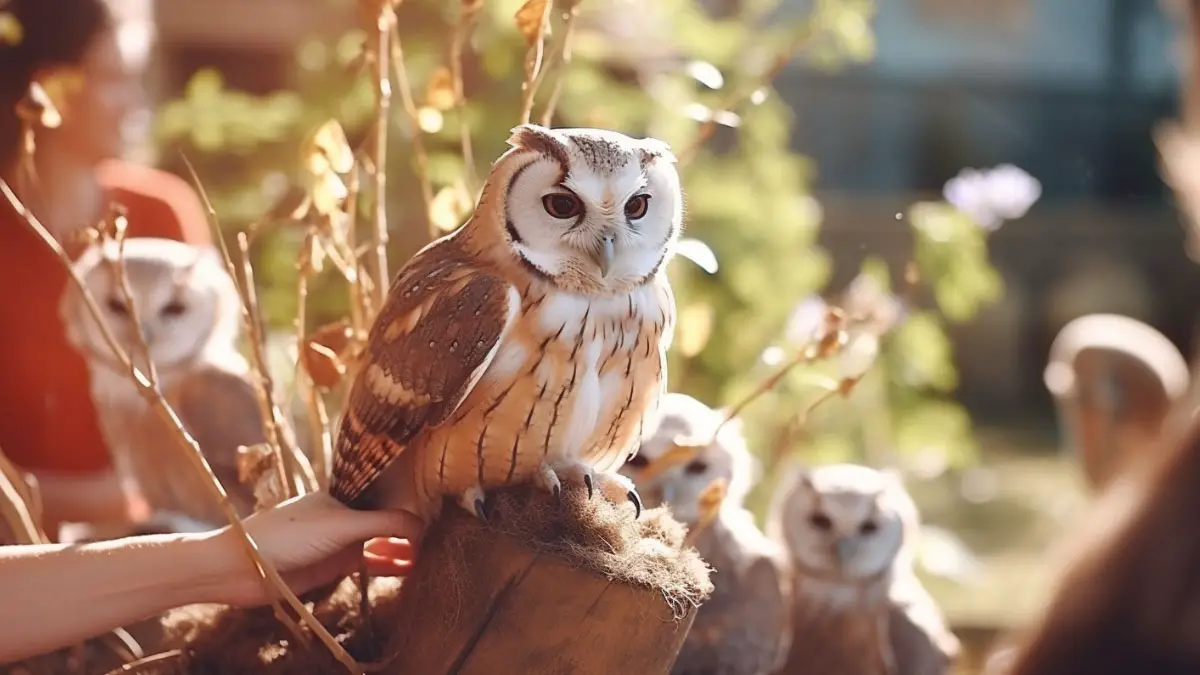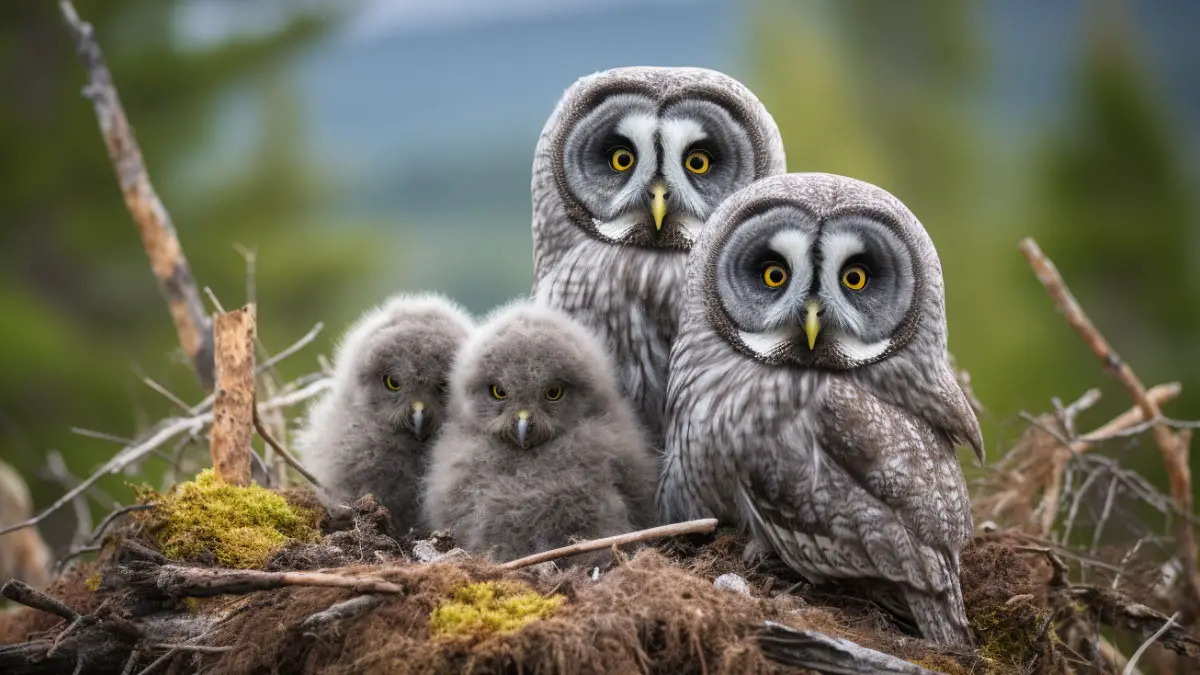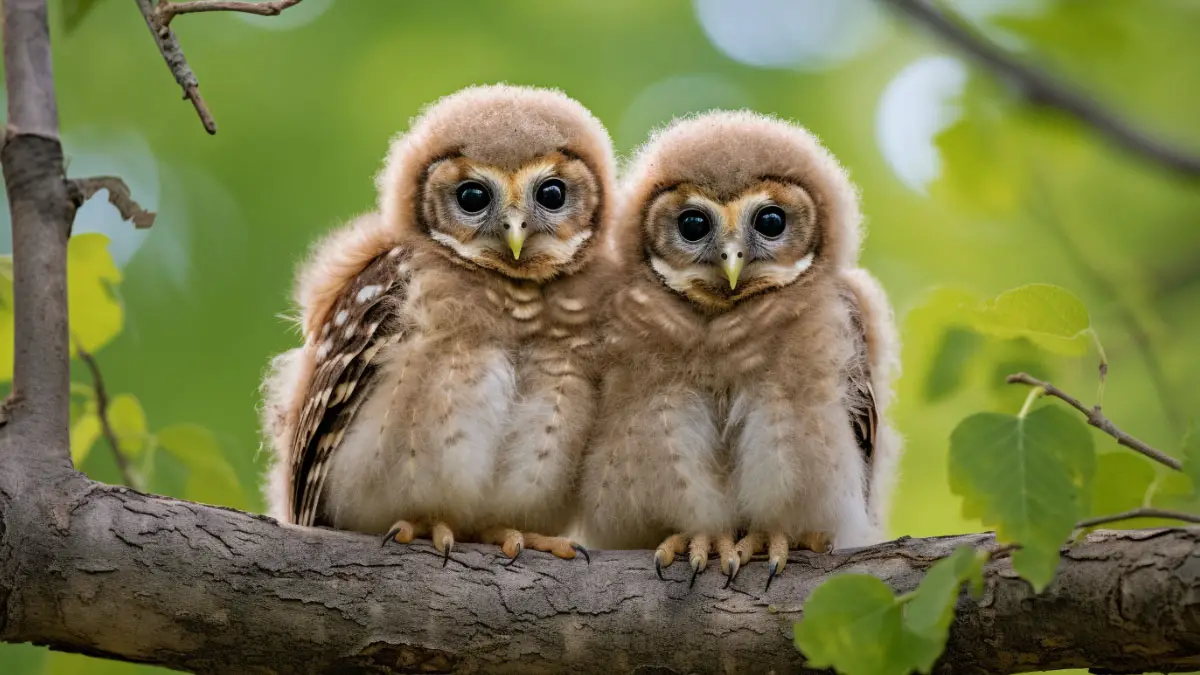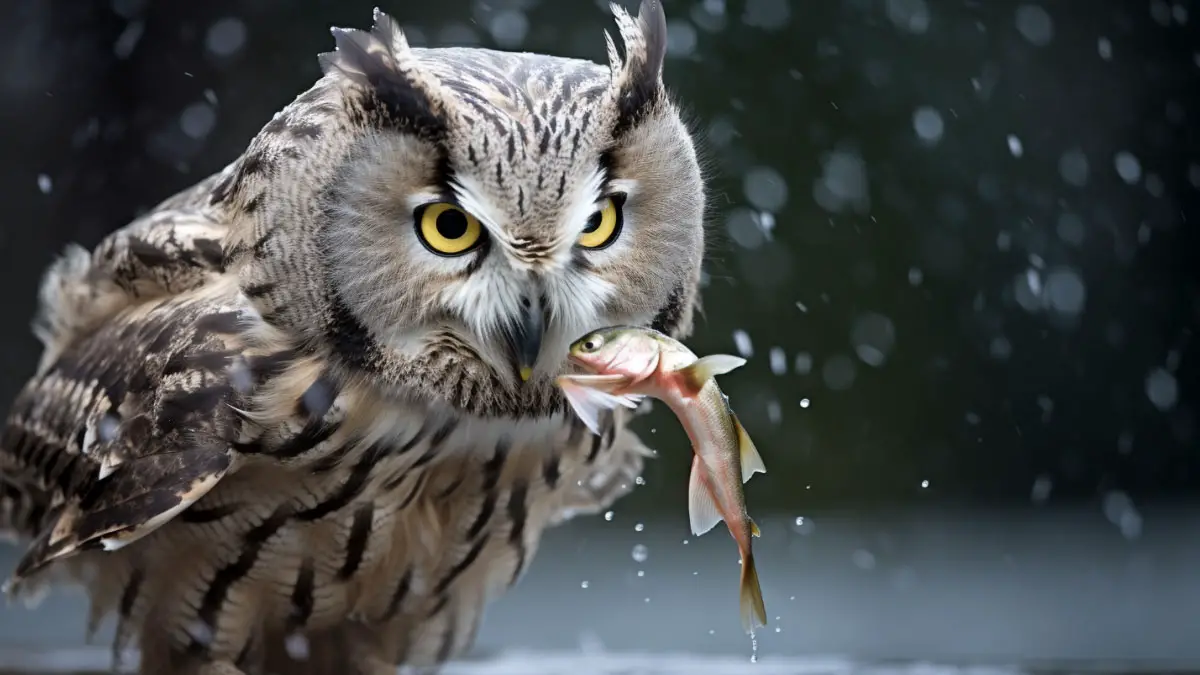Owls are popular among birdwatchers and fans of avian life due to their unique characteristics and behaviors. However, not many know much about their breeding and reproduction.
So, how do owls mate? The male owl expresses his feelings to the female by bringing her food as a token of appreciation. After that, there’s an exchange of calls and elaborate displays between them; ultimately culminating in copulation, where the male mounts the female from behind, during which sperm is passed through his cloaca into her reproductive system.
Like most animals, they have a mating season and build an elaborate nest to house their offspring. Read on to learn more about the process of breeding and reproduction in owls.
How Do Owls Mate?
Owls are birds of prey, and like most birds, they mate through copulation. During copulation, the male owl transfers sperm to the female’s reproductive tract, fertilizing her eggs.
The male owl typically mounts the female from behind and grasps her with his talons while she spreads her tail feathers to allow for genital contact. Likewise, the male owl reproductive system comprises two testes, a pair of copulatory organs called the phallus and the cloaca.
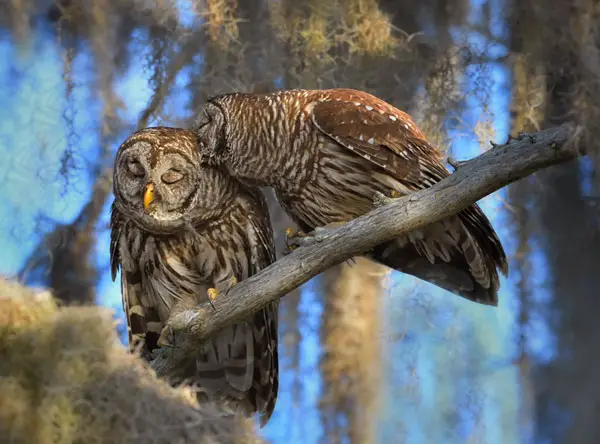
When the sperm is produced in the testes, that travels through the phallus, inserted into the female’s cloaca. Once it is inside, the sperm can fertilize her eggs.
The female owl’s reproductive system includes a single ovary and an oviduct, which she uses to lay eggs. And when mating, owls also produce a variety of courtship behaviors to attract the female. This includes everything from vocalizations, flight displays, and the preening of the feathers.
After mating, the female owl will lay her eggs and incubate them until they hatch. The chicks will usually fledge around 5-6 weeks after hatching and leave the nest around 8 weeks of age.
Do Owls Mate For Life?
Typically, owls mate for life, forming a monogamous relationship with their partner. This means they reproduce with only one mate and do not seek additional partners.
The exception is if one of the owls in the pair dies, in which case the surviving owl may search for a new mate to form a new monogamous relationship. However, some instances of polygamy, or multiple mating, exist in owl species.
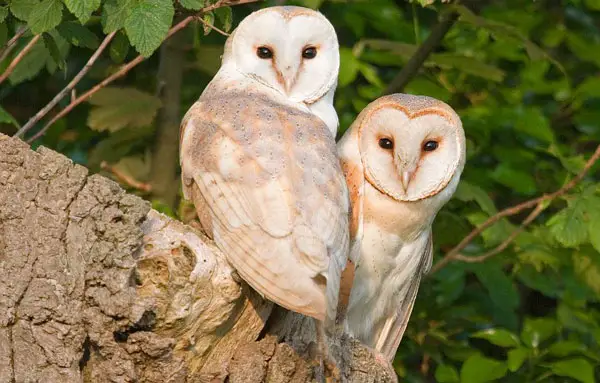
This has been observed in Great Horned Owls, where a male may mate with multiple females and provide parental care to their offspring.
But this behavior is unusual, as owls are typically considered monogamous, and both sexes play important roles in parental care. Polygyny is more common in altricial bird species, where females provide parental care.
When Is Owl Mating Season?
Owl mating season typically occurs in the winter or early spring, although the exact timing can vary depending on the species. For example, the barred owl (Strix varia) typically mates in late winter, while the great horned owl (Bubo virginianus) may begin nesting as early as December.
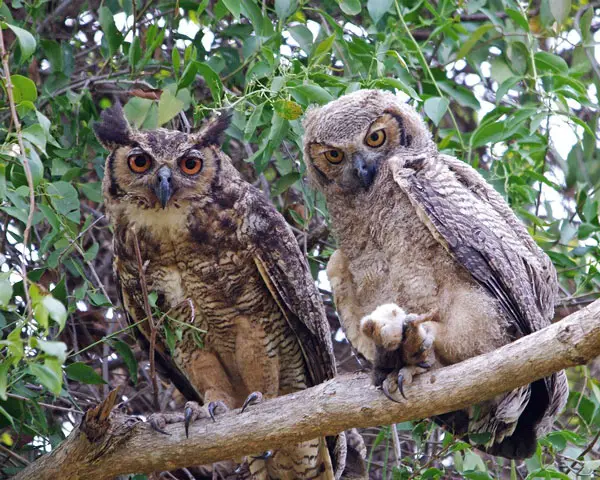
Mating and nesting behavior can also be influenced by local environmental factors such as the availability of food sources. Owls generally return to the same nesting site year after year to reproduce and raise their brood, even if they are migratory species.
However, Great Horned Owls have been known to change partners after five years. This indicates that their relationships may not be as permanent as those of other owl species.
How Do Owls Reproduce?
Owls reproduce through sexual reproduction, just like most animals. They are oviparous, meaning they bear their young in the form of eggs. The eggs must be incubated at the proper temperature to survive.
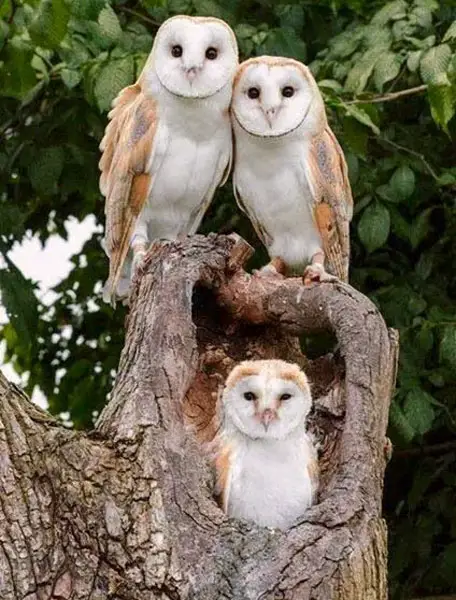
That works with the female providing direct heat to the eggs through the shedding of feathers on her chest and exposing her skin. In other words, reproduction starts with egg laying, incubation, and proper parenting.
Egg Laying and Incubation
The female will typically lay a clutch of eggs in a nest built or chosen by the pair. But the number of eggs in a clutch can vary depending on the species. The eggs are usually laid a day or two apart.
For most owl species, the female incubates the eggs while the male brings her food. The eggs will hatch after around 28-34 days. While it’s rare, some male owls also help with incubation and the care of the young.
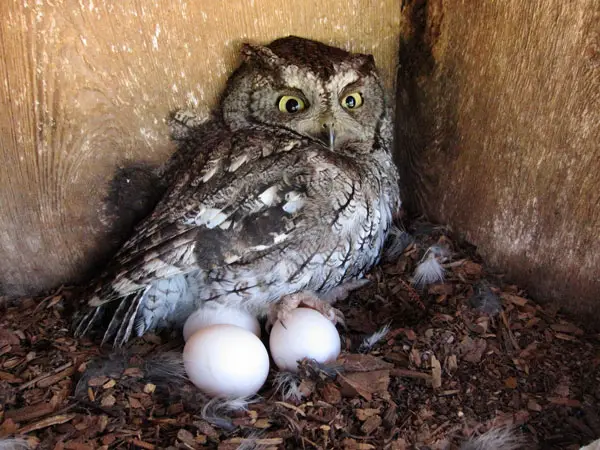
During the breeding season, male owls will attract females through courtship behaviors such as singing, displaying, and bringing food to the female.
If the female is interested, she will accept the male’s advances, and the two will mate. After mating, the female will lay eggs in a nest, a cavity in a tree, a hole in a cliff, or a nest box.
Parenting
Once the eggs hatch, the parents will continue to care for and feed the chicks until they are ready to fledge. This can take anywhere from 4-8 weeks, depending on the species.
Accordingly, once the chicks fledge, they leave the nest and begin hunting for their own food. Owls usually reach sexual maturity at around 1-2 years of age and will then be ready to start their own families.
The owlets are born altricial, meaning they are naked, blind, and helpless when they hatch, and they rely on their parents for protection and care.
In some species of owls, the male may bring food to the female while she is incubating the eggs and may also help to feed and care for the chicks once they hatch. This behavior, known as brood parasitism, helps ensure the young’s survival.
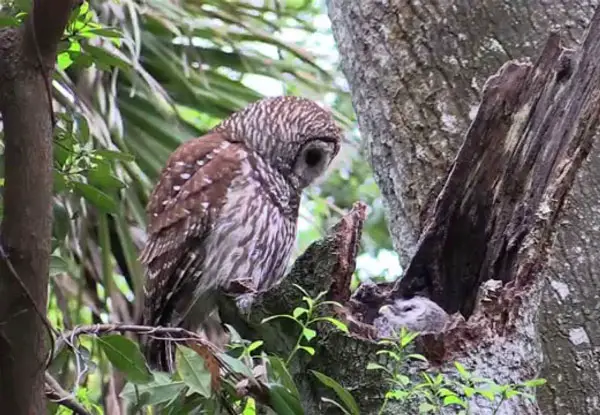
What Factors Affect Owl Reproduction?
These birds typically reproduce once a year, usually during winter or spring. However, many factors can influence the success or failure of their breeding process.
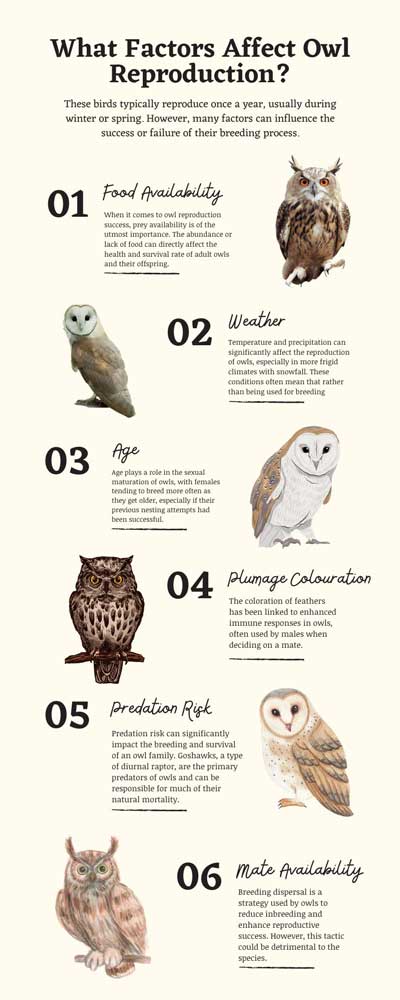
1. Food Availability🍲
When it comes to owl reproduction success, prey availability is of the utmost importance. The abundance or lack of food can directly affect the health and survival rate of adult owls and their offspring.
Likewise, when voles make up a larger portion of an owl’s diet, there are noticeably higher reproductive success rates. Worth noting: voles are three times weightier than mice meaning owls must expend even more energy hunting them. This makes them all the more desirable prey items.
2. Weather⛅
Temperature and precipitation can significantly affect the reproduction of owls, especially in more frigid climates with snowfall. These conditions often mean that rather than being used for breeding, nutrients are instead diverted to survival purposes while prey becomes scarce or harder to find.
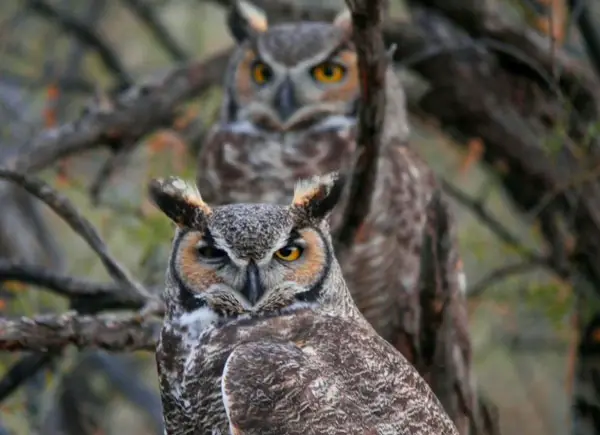
Reproductive success is most prevalent in regions nearer to the North Pole. Research has indicated that weather patterns and food resource accessibilities play an integral role in successful owl breeding.
3. Age🦉
Age plays a role in the sexual maturation of owls, with females tending to breed more often as they get older, especially if their previous nesting attempts had been successful.
Furthermore, age is also correlated with reproduction rates and survival chances. Typically, older birds are far more likely than younger ones when it comes to reproduction.
4. Plumage Colouration🦉
The coloration of feathers has been linked to enhanced immune responses in owls, often used by males when deciding on a mate. Research shows that darker tawny owls have larger wings and tails than those with deeper red plumage while consuming fewer Muridae than the latter.
Accordingly, female plumage coloration has been positively linked with parasite resistance. The male barn owls with lighter plumage tend to experience decreased reproductive success compared to their darker reddish-brown counterparts.
5. Predation Risk🦅
Predation risk can significantly impact the breeding and survival of an owl family. Goshawks, a type of diurnal raptor, are the primary predators of owls and can be responsible for much of their natural mortality.
When owls breed and reproduce at a higher rate, they become more susceptible to the hazards of predation. Therefore, in years of high predation, these birds may opt-out of reproduction altogether. Or they reduce the quality and quantity of their progeny.
In some cases, owls may even give up on the reproductive attempt before it’s completed.
6. Mate Availability🦉
Breeding dispersal is a strategy used by owls to reduce inbreeding and enhance reproductive success. However, this tactic could be detrimental to the species.
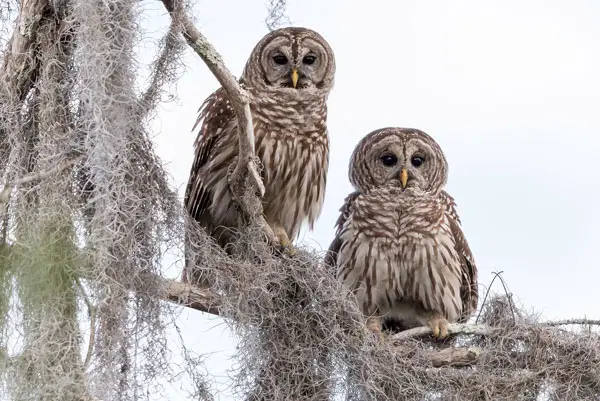
That is because it does not guarantee that individuals will find better habitats or mates when moving away from their family flock. Mate availability is, therefore, an essential factor for successful owl breeding.
7. Diseases🦠
The emergence of infectious diseases is a major contributor to wildlife species’ decline. That is caused by climate changes and human activities that allow for the spread of pathogens and carriers.
These species may face extinction due to direct mortality or decreased breeding success. Thus, the implications resulting from this could be devastating for the threatened animals and global ecosystems.
8. Habitat Quality🏠
For owls, their habitat quality is of the utmost importance when it comes to reproduction. Research shows that Barn Owles favor nesting in boxes away from roads to reduce disruptive activity.
Likewise, the breeding performance variations among this species have been attributed to differences within the environment near nest sites.
How Many Eggs Do Owls Lay, And How Often?
Owls generally lay eggs once a year, although some species may lay eggs twice a year. The timing of egg laying can vary depending on the species and the specific location. For example, some species may lay eggs in the spring, while others may lay eggs in the fall.
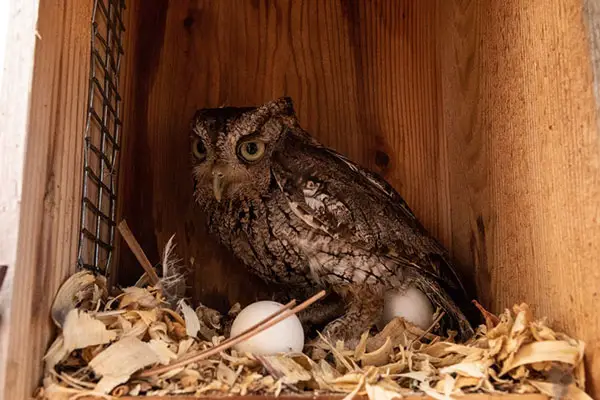
The number of eggs laid can also vary, but most owls lay between 1 and 5 eggs per clutch. And the eggs are usually laid a few days apart. Accordingly, the female owl will incubate them for around 28-34 days before they hatch.
After the eggs hatch, the parents will continue to care for and feed the chicks until they are ready to fledge. This can take anywhere from 4-8 weeks, depending on the species.
What Do Male Owls Do To Attract Female Owls?
Like other beings, the male has to go the extra step to attract a female owl. There are several ways male owls attract female owls, including finding and securing territory, calling, and providing food.
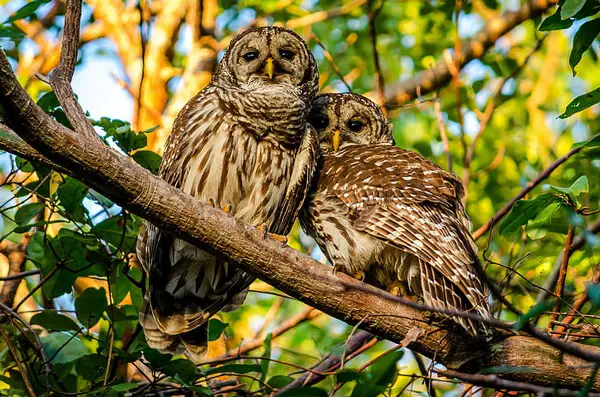
Finding and Securing Territory
One of the first steps in attracting a female owl is finding and securing a suitable territory. Male owls may use various methods to claim territory, such as singing or displaying their plumage.
They may also defend their territory against other males to attract a mate. Once a territory has been secured, the male owl can start attracting a female.
Calling
Male owls use a variety of sounds to attract female owls, such as cackles, hoots, caws, and gurgles. The purpose of these calls is to draw the attention of female individuals, and they may be accompanied by offering food.
The female’s call is distinguished from the male’s due to its higher pitch and audibility.
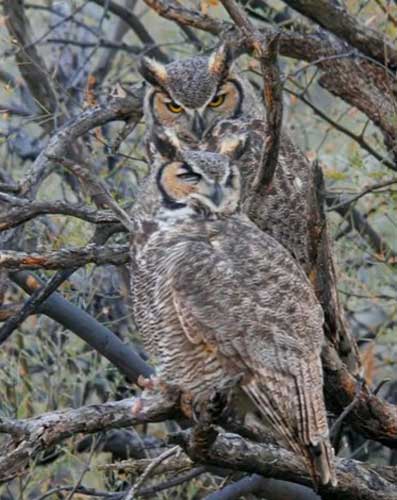
Providing Food
Male owls may also attract female owls by providing food, such as prey animals. This may be done by displaying the prey to the female and offering it as a gift. If the female accepts her meal, copulation may ensue.
This is done by carrying the prey animal in their bill and presenting it to the female. Providing food is a way for male owls to demonstrate their ability to provide for their mate and potential offspring.
What Is Unique About Barn Owls Mate?
Barn owls are known to be incredibly loyal and committed lovers that mate for life. They usually return to their old nest sites every year. Their courtship rituals are elaborate and include courtship calls, flights, and food offerings. It’s a way of establishing their pair bond every spring.
Additionally, they are highly monogamous and rarely cheat on their partner. They also show intense care for each other, and the male may even help with incubation and the care of the young.
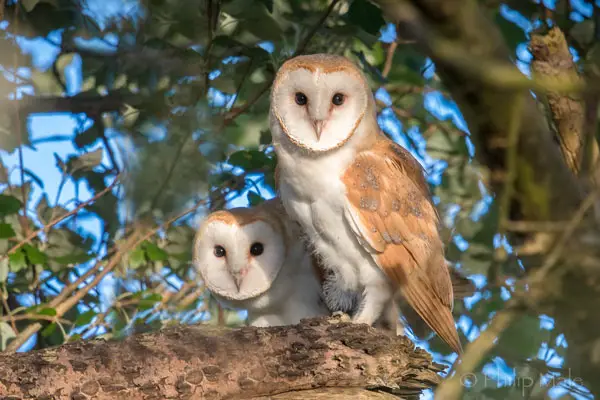
Barn owls also have a very long reproductive cycle compared to other species. They may only have one brood yearly, but they often lay more eggs than other species. This enables them to raise many young in a single season.
Do Owls Hoot When Mating?
Yes, but not all owls hoot when mating. Great horned owl, western screech owl, and barred owl is known to hoot when calling to attract a mate or claim their territory during the late winter mating season. The males typically call out to the females by emitting a series of hoots to gain their attention.
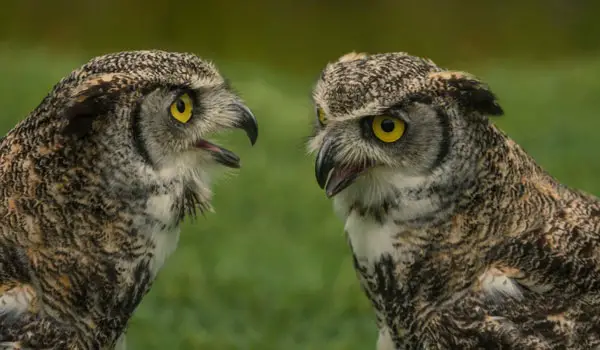
On the other hand, barn owls use a long, harsh scream made mostly by the male owl during mating season. And a softer, more wavering call known as a purring call to invite a female to inspect a nest site or for females to beg for food from the male.
FAQs
These are some commonly asked questions for further inquiries about owl breeding and reproduction.
No. Owls usually do not have more than one mate. Most owl species are devoted to one partner, preferring not to switch up their relationship unless necessary. However, some owl species are polygynous.
Yes! Owls love their babies. Owl parents are remarkably committed to their chicks and will rarely desert them or a nest that is vulnerable to other predators.
Male owls are generally lighter in color, with a light buff or white barring. Females tend to be more buff or brown hue, accompanied by dark grey and black stripes. Additionally, if the owl’s tail is light-colored without bars or patterns, it most likely belongs to a male specimen.
Conclusion
Owls are fascinating birds, and there is much to learn about their breeding and reproduction. They mate through copulation, where the male transfers sperm to the female’s reproductive tract to fertilize her eggs. Most owl species are monogamous and mate for life, although there are some instances of polygamy.
Likewise, the timing of egg laying can vary depending on the species and the location, but most owls lay between 1 and 5 eggs per clutch. Male owls attract female owls by finding and securing a suitable territory, calling, and providing food.
